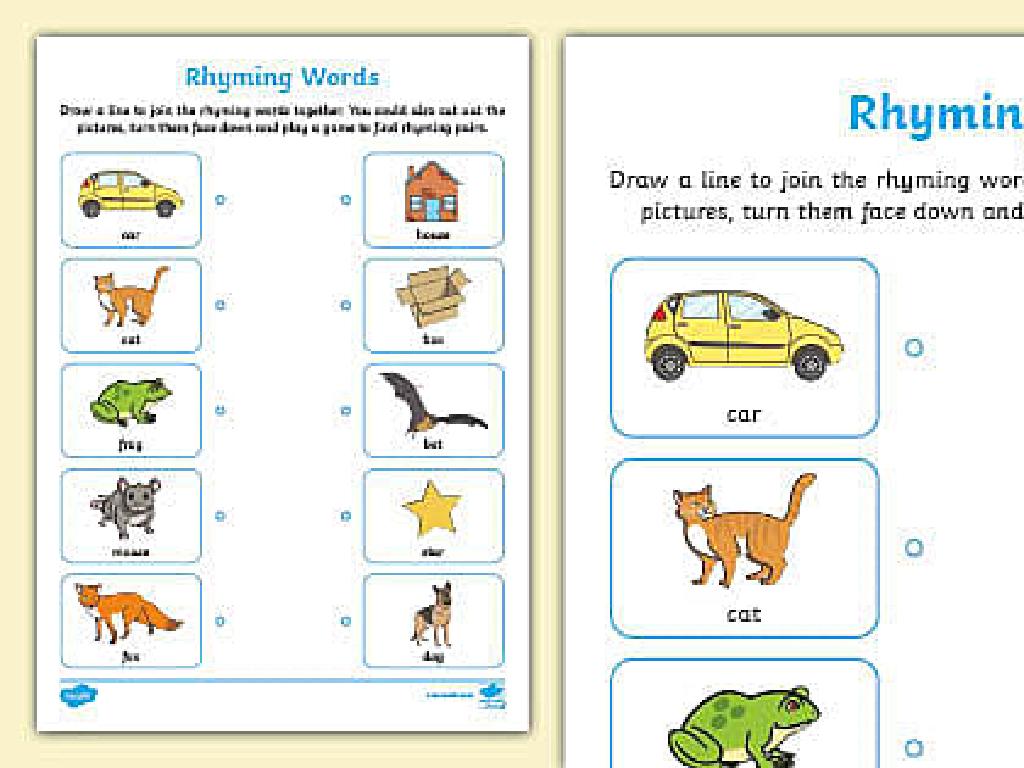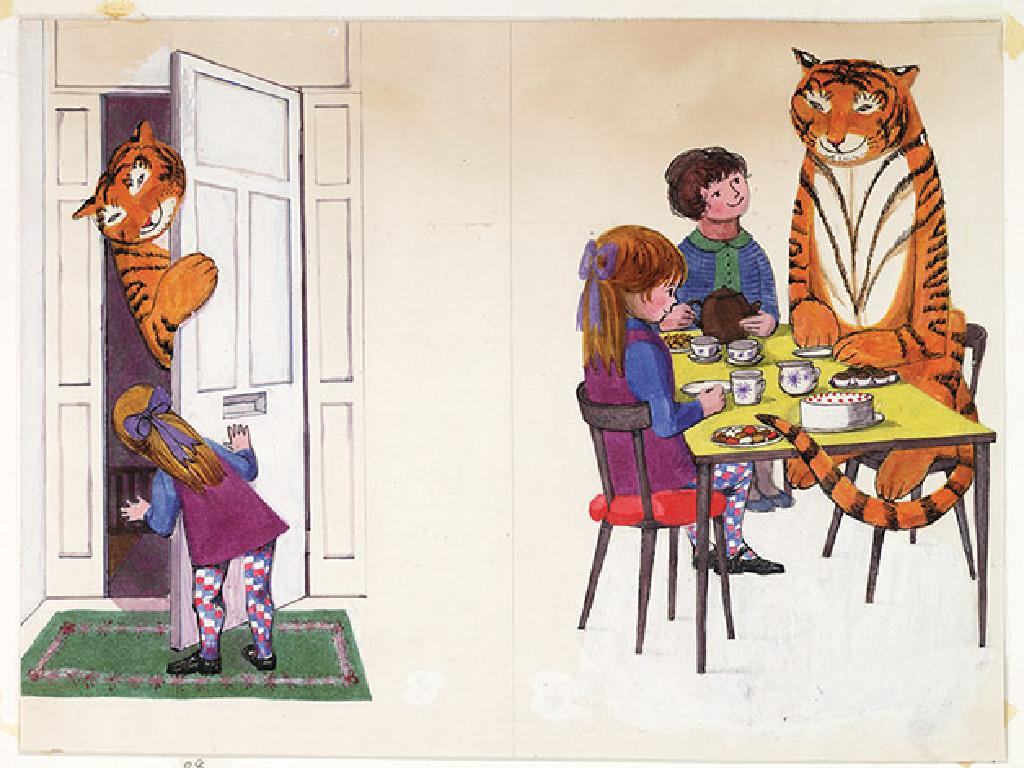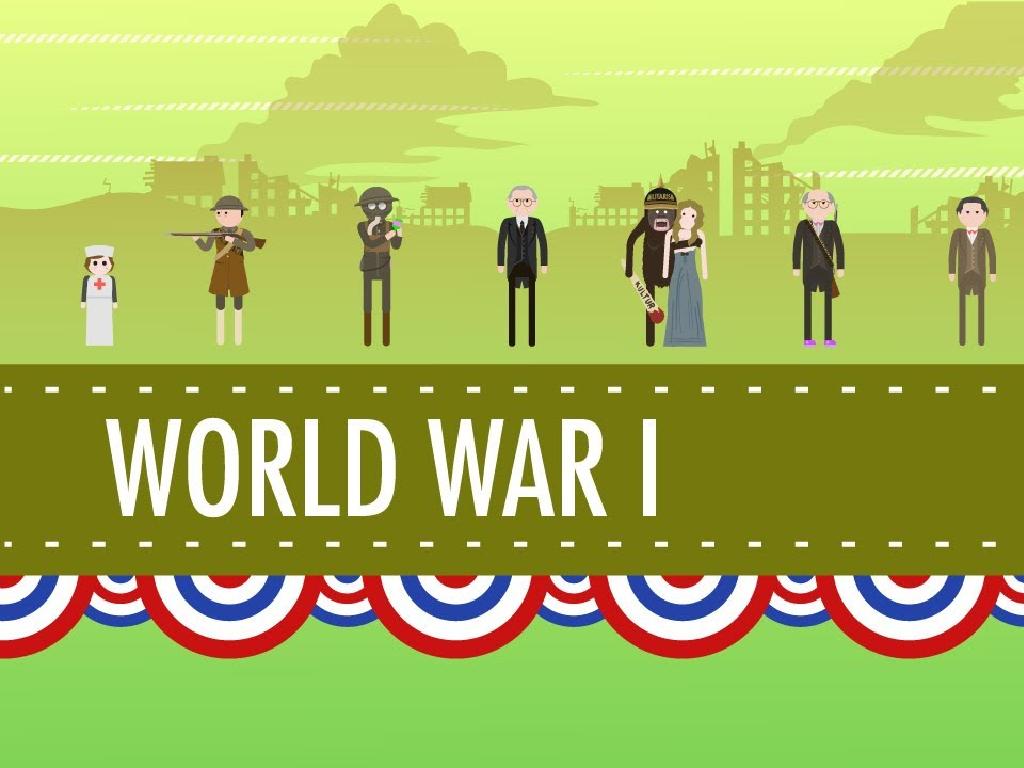Global Conflict
Subject: Arts and humanities
Grade: High school
Topic: World History Project Ap
Please LOG IN to download the presentation. Access is available to registered users only.
View More Content
Introduction to Global Conflict
– Historical context of conflicts
– How past events shape present conflicts
– Causes and effects globally
– Explore reasons behind wars and their outcomes
– Significance of conflict studies
– Understand why learning about conflicts is crucial
– Analyzing conflict impact
– Assess how conflicts alter economies, politics, and societies
|
This slide introduces the complex topic of global conflict by first placing it within a historical framework, showing how past events and tensions have contributed to current global issues. Students should explore various causes such as political, economic, and social factors that lead to conflicts and understand their multifaceted effects on countries and regions. Highlight the importance of studying these conflicts to learn from the past and to promote peace and resolution strategies. Encourage students to think critically about how conflicts have shaped the world and to consider the long-term impact on global stability. Provide examples like World Wars, Cold War, and recent conflicts to illustrate these points.
Understanding Global Conflict
– Define ‘Conflict’
– A serious disagreement or argument, often a protracted one.
– Explore types of conflicts
– Internal (within a country), External (between countries), Military, Political, Economic.
– Historical conflict examples
– World Wars, Civil Wars, Colonial Wars.
– Modern conflict instances
– Syrian Civil War, Ukraine-Russia conflict.
|
This slide aims to introduce students to the concept of conflict in a global context. Begin with a basic definition of conflict as a serious disagreement or argument, which can be prolonged. Discuss the various types of conflicts, including internal, external, military, political, and economic, providing a brief explanation of each. Use historical examples such as the World Wars and colonial wars to illustrate past conflicts. Then, transition to contemporary conflicts like the Syrian Civil War and the ongoing Ukraine-Russia conflict to show how global conflicts continue to shape our world. Encourage students to think critically about the causes and effects of these conflicts and to consider the human impact behind the headlines.
Roots of Global Conflict
– Uncover root causes of conflicts
– Historical disputes often stem from complex, intertwined issues.
– Resources, ideology, and power roles
– Competition for resources, differing beliefs, and power struggles are common catalysts.
– Case study: World War I origins
– Examine the interplay of nationalism, alliances, imperialism, and militarism in WWI.
– Understanding conflict to prevent it
|
This slide aims to delve into the underlying reasons behind global conflicts, with a focus on how resources, ideology, and the quest for power contribute to disputes. By analyzing the causes of World War I, students can see a real-world example of these factors at play. The case study will cover how nationalism, complex alliances, imperialism, and militarism set the stage for a global conflict. Encourage students to think critically about how understanding these root causes can help in preventing future conflicts. Discussions can also touch on current global tensions and how they may be similar or different from past conflicts.
Impact of Global Conflicts
– Short-term vs. long-term conflict effects
– Immediate disruption and long-lasting changes to nations
– Conflicts’ impact on borders and societies
– Shifts in territorial lines and societal restructuring
– Global relations transformation due to conflicts
– Alliances form or dissolve, affecting international cooperation
– Personal narratives from conflict zones
– Stories of individuals provide a human perspective on war
|
This slide aims to explore the multifaceted impacts of global conflicts on the world stage. Discuss the immediate consequences of conflicts, such as economic turmoil and loss of life, and the long-term effects, including generational trauma and political shifts. Highlight how wars can lead to redrawing of borders and can reshape societies through population displacement and cultural changes. Examine how global relations are affected, with new alliances forming and old ones breaking down, influencing international policies and cooperation. Incorporate personal stories from individuals in conflict zones to humanize the abstract concepts and help students grasp the real-world implications of global conflicts. Encourage critical thinking by comparing different conflicts and their unique impacts on the world.
Conflict Resolution Strategies
– Methods to resolve conflicts
– Negotiation, mediation, arbitration, and diplomacy
– UN’s role in peacekeeping
– The UN deploys peacekeepers, mediates disputes, and supports elections
– Examples of successful resolutions
– The Good Friday Agreement in Northern Ireland, the Treaty of Versailles post-WWI
|
This slide aims to educate students on the various methods and strategies used in conflict resolution, emphasizing the importance of international organizations like the United Nations in facilitating peacekeeping efforts. Discuss the different approaches to resolving conflicts, such as negotiation and diplomacy, and how these methods are applied in real-world scenarios. Highlight the UN’s role in maintaining international peace and security, including their peacekeeping missions and mediation processes. Provide historical examples of successful conflict resolutions to illustrate these concepts in action, such as the Good Friday Agreement, which helped to end the conflict in Northern Ireland. Encourage students to think critically about the effectiveness of different strategies and the challenges faced in achieving lasting peace.
Global Conflict in the Modern World
– Impact of technology on conflicts
– Tech advances change how wars are fought and information is shared.
– Globalization’s role in conflicts
– Economic, cultural, and political interdependence can escalate disputes.
– Case studies of modern conflicts
– Explore the Syrian Civil War and the Ukraine-Russia conflict.
– Conflict resolution in a connected era
– International diplomacy and cyber peacemaking strategies.
|
This slide aims to explore the intricate relationship between technology, globalization, and global conflicts. Highlight how technological advancements have transformed warfare and the dissemination of information, potentially escalating conflicts. Discuss how globalization has led to increased economic, cultural, and political interdependence, which can both prevent and provoke international disputes. Use modern examples like the Syrian Civil War and the Ukraine-Russia conflict to illustrate the complexities of current global conflicts. Finally, delve into how the future of conflict resolution may evolve, considering the interconnected nature of our world, and discuss the role of international diplomacy and emerging cyber peacemaking strategies.
Conflict Resolution Workshop: Historical Analysis
– Divide into small groups
– Analyze a given historical conflict
– Each group receives a different conflict from history to examine
– Discuss and propose resolutions
– Consider the causes, stakeholders, and possible peace strategies
– Reflect on solution effectiveness
– Class to evaluate the viability and impact of each group’s solutions
|
This class activity is designed to engage students in a hands-on workshop where they can apply their understanding of global conflicts by analyzing historical events. By working in small groups, students will foster teamwork and critical thinking skills. Each group will be assigned a different historical conflict to ensure a variety of perspectives and solutions are discussed. After group discussions, students will present their potential resolutions, followed by a class-wide discussion to critique and understand the effectiveness of these solutions. This activity will help students appreciate the complexity of conflict resolution and the importance of historical context. Possible conflicts for analysis could include the Cuban Missile Crisis, the Israeli-Palestinian conflict, or the Cold War. Teachers should prepare a list of conflicts and ensure that resources are available for each group to conduct their analysis.






